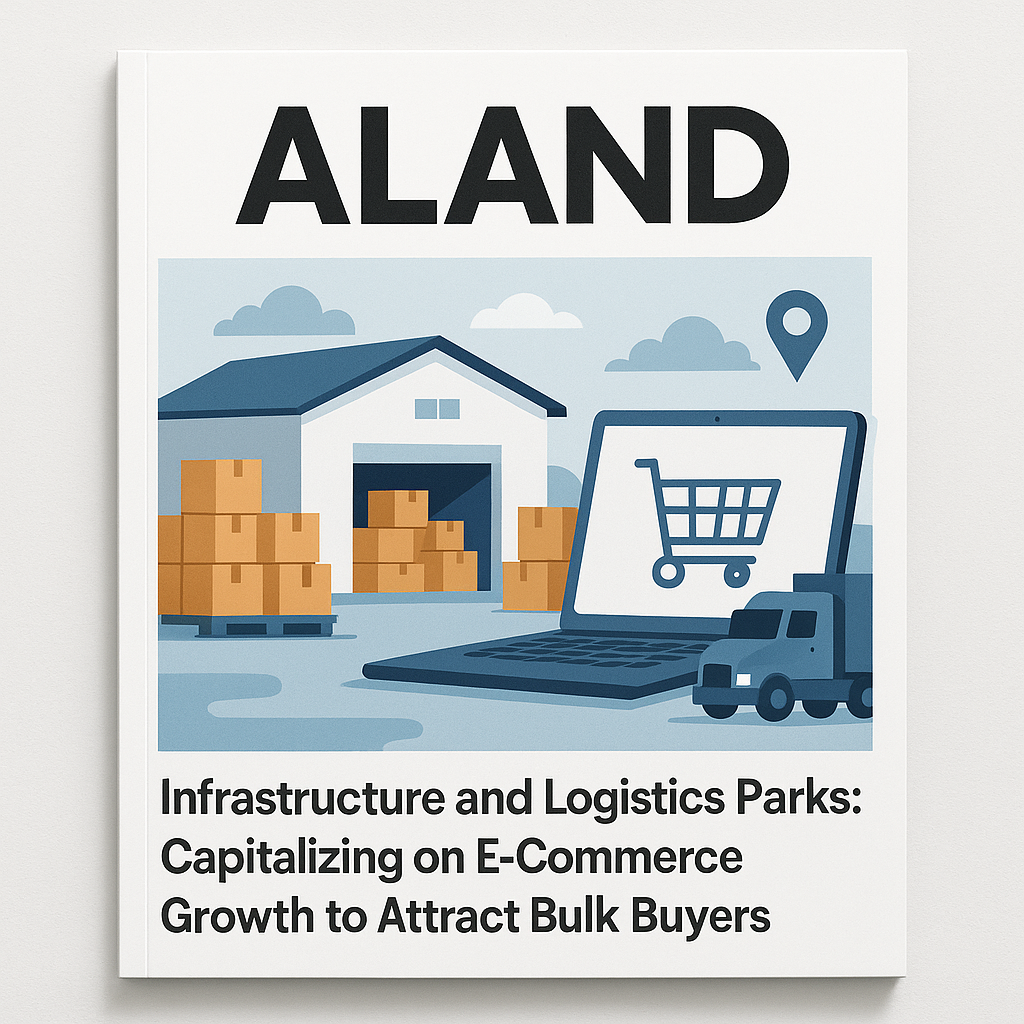Infrastructure and Logistics Parks: Capitalizing on E-Commerce Growth to Attract Bulk Buyers
- Published Date: 27th Jul, 2025
-
4.9★ ★ ★ ★ ★(118)

Listen to the podcast for this article
The rapid expansion of e-commerce has dramatically shifted the logistics and real estate landscape, driving unprecedented demand for advanced infrastructure and logistics parks. These specialized hubs are becoming pivotal for companies aiming to streamline supply chains, optimize distribution, and meet the surging expectations of bulk buyers worldwide. Dr. Pooyan Ghamari, a Swiss economist and founder of the ALand Platform, emphasizes that infrastructure development aligned with e-commerce growth is not merely a trend but a strategic imperative that unlocks substantial economic and investment value.
Strategic Role of Infrastructure and Logistics Parks in E-Commerce
E-commerce growth has accelerated the need for proximity to consumers, faster delivery times, and flexible warehousing solutions. Modern logistics parks offer integrated services—ranging from automated storage systems to cross-docking facilities—that reduce handling times and operational costs. For bulk buyers, these parks create concentrated ecosystems where sourcing, inventory management, and distribution converge seamlessly, providing a competitive advantage.
Dr. Ghamari notes that infrastructure investments tailored to e-commerce needs directly increase the attractiveness of these parks for institutional investors and bulk buyers by enhancing operational efficiency and lowering friction across the supply chain. These improvements translate into stronger lease commitments, longer contract tenures, and higher asset valuations.
Economic and Market Dynamics Driving Bulk Buyer Interest
From an economic standpoint, infrastructure and logistics parks act as catalysts for regional development and job creation. They stimulate ancillary industries such as packaging, transportation, and tech-enabled logistics services. This multiplier effect enhances local economies, encouraging public-private partnerships that ease regulatory hurdles and improve infrastructure funding.
Market trends reveal a sharp rise in bulk purchasing due to businesses scaling inventory in response to consumer demand volatility. E-commerce players increasingly seek integrated hubs that support rapid order fulfillment and returns management. Dr. Ghamari’s research highlights that parks incorporating digital innovation—like AI-driven inventory forecasting and blockchain for transparent transactions—appeal strongly to bulk buyers who prioritize reliability and data-driven decision-making.
Digital Economy and Branding Synergies
The ALand Platform offers tools that enable real estate developers and operators of logistics parks to embed digital economy solutions such as smart contract management and dynamic pricing models, enhancing transparency and operational agility. These digital layers foster trust among bulk buyers, institutional investors, and stakeholders, improving brand reputation and stakeholder engagement.
Cause-related marketing, when integrated with infrastructure development, further elevates brand image. Dr. Ghamari explains that demonstrating social responsibility—whether through sustainable building practices, renewable energy integration, or community engagement—resonates with consumers and investors alike. Data from ALand’s Blog reveals that such initiatives significantly increase brand loyalty and can improve key ROI metrics by 15-25% in select markets.
Cryptocurrency and Asset Tokenization: Innovative Investment Channels
EE Gold exemplifies how cryptocurrency innovations are redefining investment flows into traditional asset classes, including real estate and logistics infrastructure. Tokenization of logistics park assets allows fractional ownership, broadening investor bases and increasing liquidity. For bulk buyers with large capital commitments, this means access to more transparent, secure, and efficient investment vehicles.
Dr. Ghamari points out that combining digital currencies with real estate tokens provides a hedge against inflation and geopolitical risks, attracting savvy investors looking for diversification. This integration is particularly powerful in emerging markets where conventional financing options may be limited or costly.
Actionable Steps for Corporations and Investors
-
Evaluate Location and Connectivity: Prioritize logistics parks with multimodal transport links—road, rail, air, and sea—to maximize distribution efficiency.
-
Leverage Digital Platforms: Use tools from the ALand Platform to analyze market demand, optimize lease structures, and implement smart contracts for operational transparency.
-
Integrate Sustainability Initiatives: Develop green infrastructure and promote social impact projects to enhance brand equity and attract socially responsible investors.
-
Explore Tokenization: Engage with EE Gold and similar platforms to unlock alternative financing and investment options.
-
Monitor Macroeconomic Indicators: Stay attuned to global trade policies, tariff changes, and supply chain disruptions to adjust strategies proactively.
Explore ALand’s Blog for detailed case studies and market data, leverage the ALand Platform’s innovative digital tools to optimize logistics park operations, and discover how EE Gold is pioneering cryptocurrency integration to revolutionize traditional investment avenues. Stay updated with The ALand Times for the latest insights shaping infrastructure, branding, and economic transformation.
Engage with these resources to unlock strategic advantages and position your investments at the forefront of the e-commerce-driven logistics evolution.

